Bitcoin has traditionally adopted a well-known four-year cycle. Now, two years into the present cycle, traders are intently watching patterns and market indicators for insights into what the subsequent two years could maintain. This text dives into the anatomy of Bitcoin’s four-year cycle, previous market conduct, and future prospects.
The 4 12 months Cycle
Bitcoin’s four-year cycle is partly influenced by the scheduled halving occasions, which scale back the block reward miners obtain by 50% each 4 years. This halving decreases the availability of recent Bitcoin coming into the market, typically creating supply-demand pressures that may push costs larger.
This may be clearly visualized by the Inventory-to-Move Mannequin, which compares the present BTC in circulation to its inflationary price, and fashions a ‘fair-value’ based mostly on comparable exhausting belongings comparable to Gold and Silver.
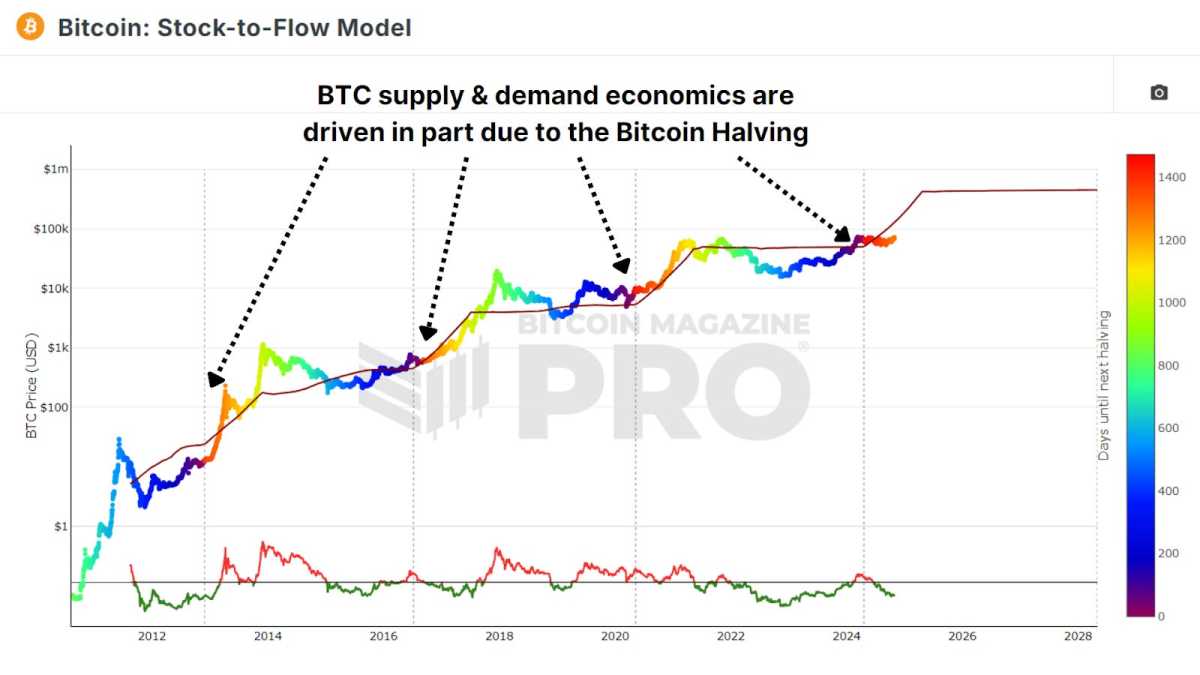
At present, we’re halfway by this cycle, that means we’re probably coming into a interval of exponential positive factors as the everyday one 12 months catch-up part following the halving progresses.
A Look Again at 2022
Two years in the past, Bitcoin confronted a extreme crash amid a sequence of company implosions. November 2022 marked the downfall of FTX, as rumors of insolvency triggered huge sell-offs. The domino impact was brutal, as different crypto establishments, comparable to BlockFi, 3AC, Celsius, and Voyager Digital, additionally went underneath.
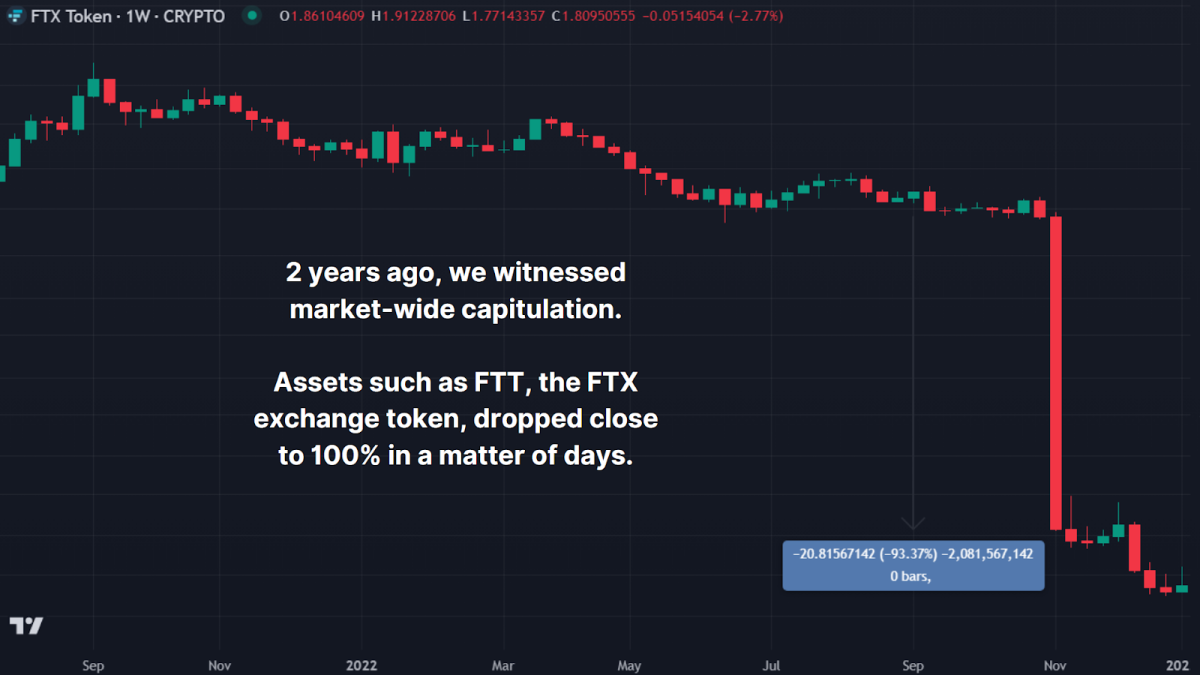
Bitcoin’s value tumbled from round $20,000 to $15,000, mirroring the broader market panic and leaving traders anxious about Bitcoin’s survival. Nonetheless, true to type, Bitcoin rallied once more, climbing again up fivefold from the 2022 lows. Traders who weathered the storm had been rewarded, and this rebound helps the argument that Bitcoin’s cyclical nature stays intact.
Comparable Sentiment
Along with value patterns, investor sentiment additionally follows a predictable rhythm throughout every cycle. Analyzing the Internet Unrealized Revenue and Loss (NUPL), a metric displaying unrealized positive factors and losses out there, means that feelings like euphoria, worry, and capitulation repeat usually. Bitcoin traders sometimes face intense emotions of worry or pessimism throughout every bear market, solely to shift again towards optimism and euphoria as costs recuperate and rise. At present, we’re as soon as once more coming into the ‘Perception’ stage following our early cycle runup and subsequent consolidation.
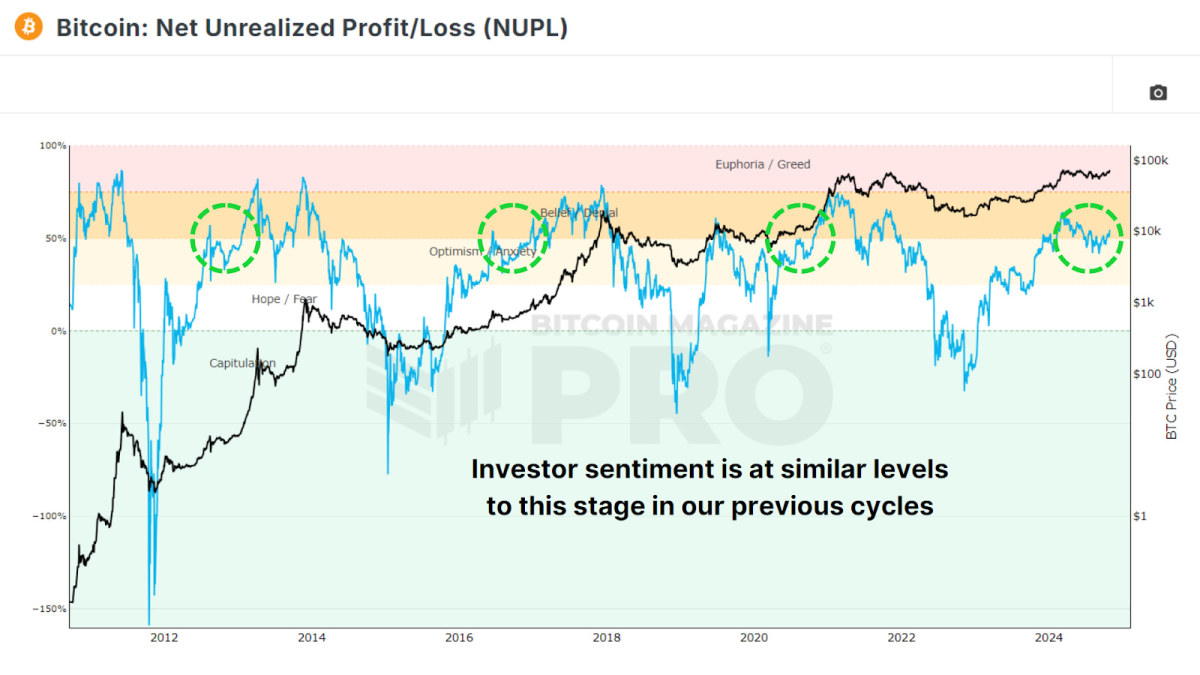
The World Liquidity Cycle
The worldwide cash provide and cyclical liquidity, as measured by World M2 YoY vs BTC, has additionally adopted a four-year cycle. As an illustration, M2 liquidity bottomed out in 2015 and 2018, simply as Bitcoin hit lows. In 2022, M2 once more hit a low level, completely aligning with Bitcoin’s bear market backside. Following these durations of financial contraction, we see fiscal enlargement throughout central banks and governments in every single place, which ends up in extra favorable circumstances for Bitcoin value appreciation.
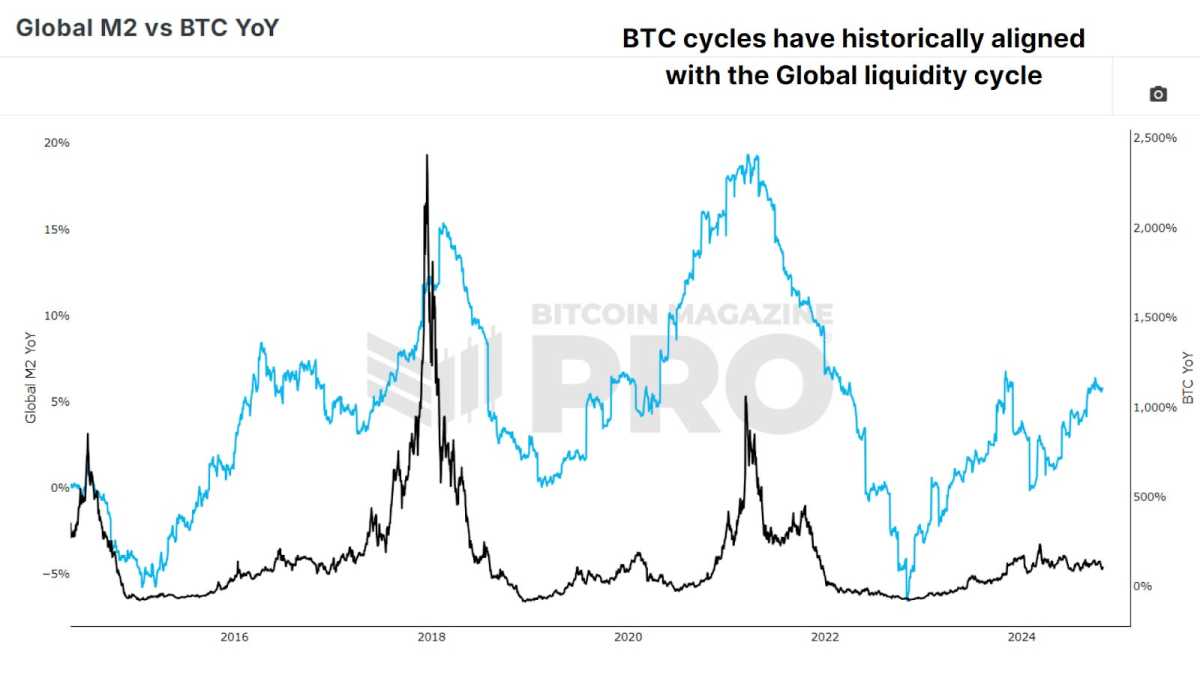
Acquainted Patterns
Historic value evaluation means that Bitcoin’s present trajectory is strikingly much like earlier cycles. From its lows, Bitcoin normally takes round 24-26 months to interrupt previous earlier highs. Within the final cycle, it took 26 months; on this cycle, Bitcoin’s value is on an identical upward trajectory after 24 months. Bitcoin has traditionally peaked about 35 months after its lows. If this sample holds, we might even see vital value will increase by October 2025, after which one other bear market might set in.
Following the anticipated peak, historical past suggests Bitcoin would enter a bear part in 2026, lasting roughly one 12 months till the subsequent cycle begins anew. These patterns aren’t a assure however present a roadmap that Bitcoin has adhered to in earlier cycles. They provide a possible framework for traders to anticipate and adapt to the market.
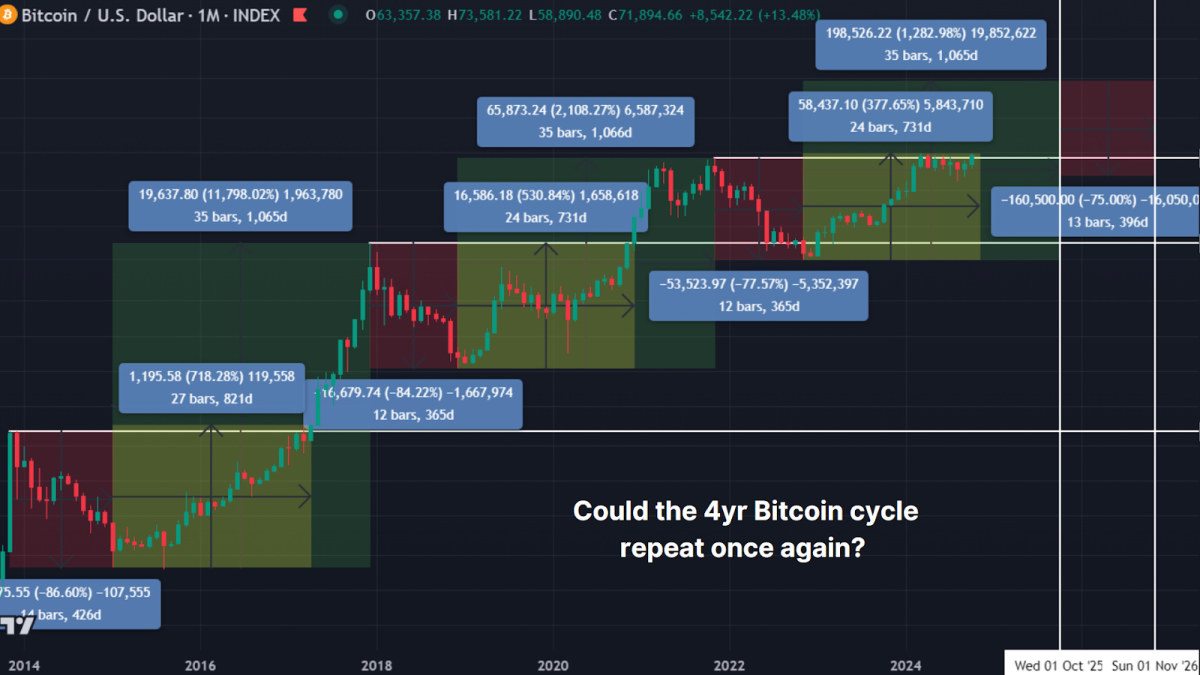
Conclusion
Regardless of challenges, Bitcoin’s four-year cycle has endured, largely on account of its provide schedule, world liquidity, and investor psychology. As such, the four-year cycle stays a invaluable device for traders to interpret potential value actions in Bitcoin and our base case for the remainder of this cycle. Nonetheless, relying solely on this cycle could possibly be shortsighted. By incorporating on-chain metrics, liquidity evaluation, and real-time investor sentiment, data-driven approaches may also help traders reply successfully to altering circumstances.
For a extra in-depth look into this subject, try a current YouTube video right here: The 4 12 months Bitcoin Cycle – Half Manner Finished?


















